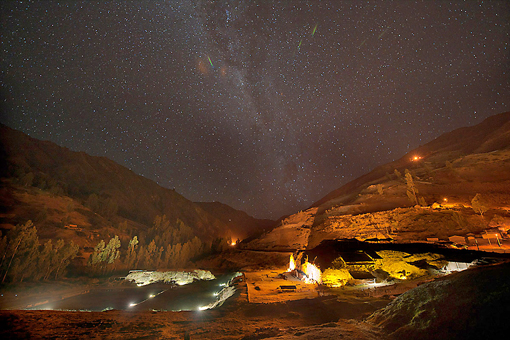It’s time to add another stop on Peru’s archeological tour. Chavín de Huántar may lack the vertigo-inducing majesty and mystery of Machu Picchu or the intriguing juxtaposition of the pre-Incan pyramid of Huaca Pucllana with urban Lima, but it has two other important traits: novelty and a dash of creepiness. The Chavín period existed from roughly 1200 B.C. to 500 B.C. and once stretched almost along the entire coast of Peru. The spiritual center was in Chavín de Huántar in Peru’s Ancash region, the site of one of the period’s most outstanding temples. The dig has been led by Stanford University archeologist John Rick for over 18 years. Rick has been slowly peeling away the dirt covering the mysteries: a network of tunnels where he believes followers spent days underground; evidence of likely human sacrifices; and shards of delicately sculptured pottery still bearing the original paint. Also present on the archeological site are a circular plaza and El Lanzón, a ceremonial totem that has been restored to its original condition—perhaps the best-preserved icon of a major New World culture found so far.
Rick believes the Chavín people operated more like a cult than a mass religion. “These temples served as a fantastic architectural context in which manipulations of light and sound and the effects of psychoactive drugs combined to convince new converts that the priest’s powers were natural and real—a cult worth the price of joining,” he explains. But the best thing about Chavín de Huántar is that visitors can explore pre-Incan history as it is revealed. The monumental temple mounds, covered by a mudslide in 1945, are pock-marked with fresh excavations as archaeologists unearth new evidence of Chavín’s long and bizarre history.
View a slideshow of Chavín de Huántar’s archeological ruins. All photos courtesy of Nicolas Villaume.





